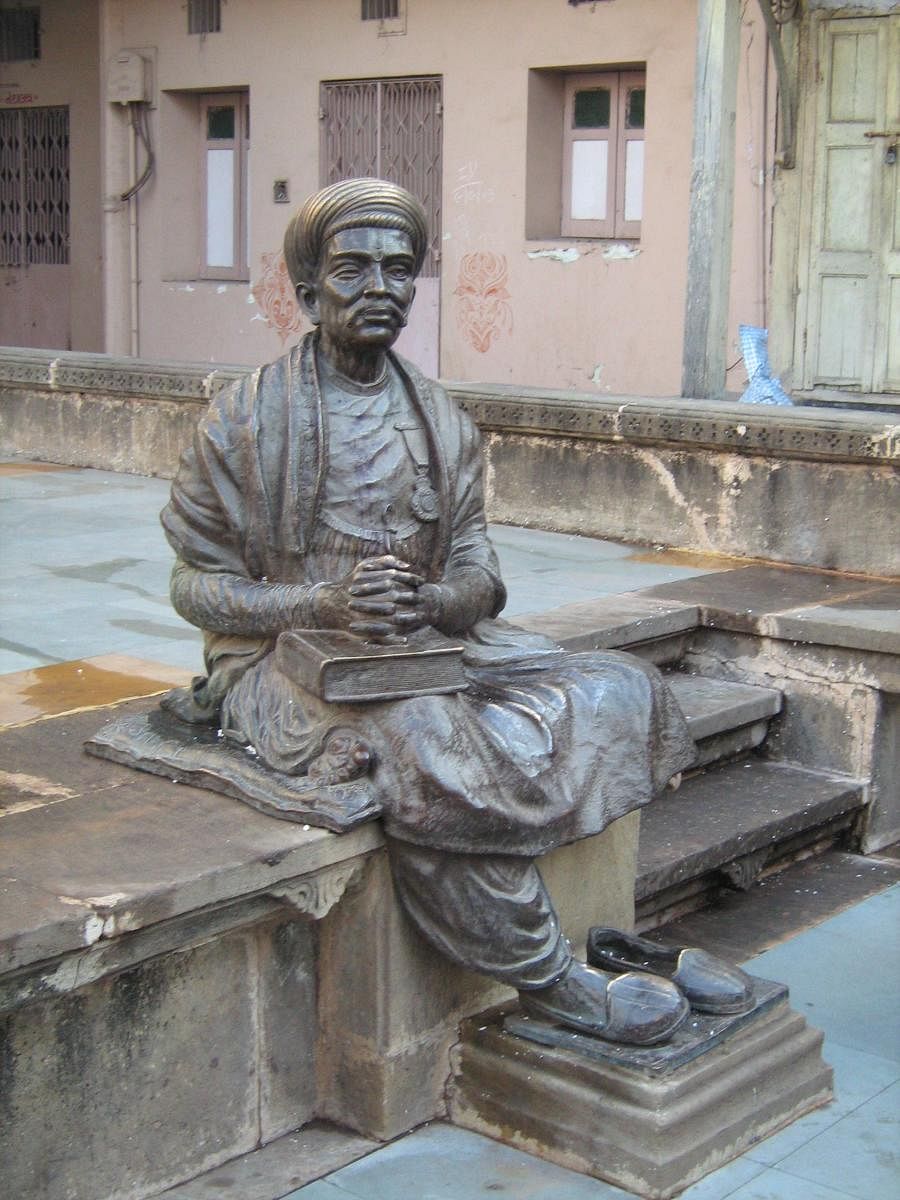
Ahmedabadis are an emotional lot. This is evident as one passes through the Lambeshwar ni Pol (neighbourhood) that houses one of the most prominent landmarks of their old city — the statue of Dalpatram Dahyabhai Travadi. “More than 120 years after his death, he continues to live in the hearts of not just this neighbourhood but also Ahmedabad,” smiles Nirav Panchal, our local friend-turned-guide talking about one of the most revered poets and social activists of the 1800s.
Looking around, taking pictures, we’re already smitten by the slices of the cultural mosaic that the old city of Ahmedabad offers.
Having just finished with some freshly prepared fafdas from a local shop, we started our day by first paying obeisance at the beautiful 200-year-old Swaminarayan Mandir in Kalupur, and then just watching pigeons having their fill of the grains from the courtyard chabutro. A visit to this temple sets the ball rolling for the heritage walk of the old city that takes you past street vendors selling flowers and vegetables outside the temple gate to reach the Kavi Dalpatram Chowk.
It was in the year 2001 that the pol residents felt that the neighbourhood needed a memorial dedicated to their very own Kavi Dalpatram. No, not a statue placed on a high pedestal “with only the birds for company” as Nirav laughs, but one they could sit and ‘converse’ with. So, with the residents’ concurrence, the area of his (by then dilapidated) house was cleared to make way for a courtyard where people could just sit and chat, children could play and cultural activities including recitations of Dalpatrambhai’s poems could be organised. Just the façade of the poet’s house was recreated at one end of the courtyard to give a feel of what his home looked like back then.
“And ever since Kavi Dalpatram’s bronze statue was installed, I’ve seen people coming here, sitting with their arms on his shoulders or the younger ones in his lap talking to him as they would talk to an older friend or grandfather. After all, he is their dada,” says Kirti Thakar whom we meet here.
From here, we walk into Ramji Mandir that forms part of an old haveli. “The present residents of the haveli do not mind sharing this part of their house with strangers. “Ahmedabadis are strong believers of the atithi devo bhava concept,” adds Nirav.
A little later, as we stand in the Jain pol, he mentions the common points of almost all such old neighbourhoods — besides residents of the same faith, caste and habits living together, there is also a temple, a bird-feeder and an announcement board that, at one point, carried announcements of the pol panchayat, etc.
“It was like the social media of today,” adds a local sitting on the chabutro of his house. And as we smile, he asks us a simple question: “Do you know there’s never been a major war in Gujarat? That’s because we people are a peace-loving lot.” “Instead of fighting, we’d rather seek shelter elsewhere,” laughs Nirav taking us to a small courtyard where he lets on a little secret — that most of the doors here are fake and only one is real — built to fox the enemy and let the residents (in the possibility of a war or even an attack by dacoits) escape to safety.
Trying out several of them, amid much laughter, we manage to find a small door that takes us down a narrow passage — and ‘freedom’ on the other side.
Many such architectural delights abound as Thakar also informs us about the city’s underground sewage system — the country’s first in Ahmedabad — that was laid more than 100 years ago.